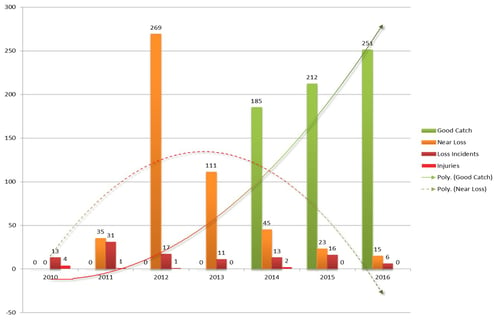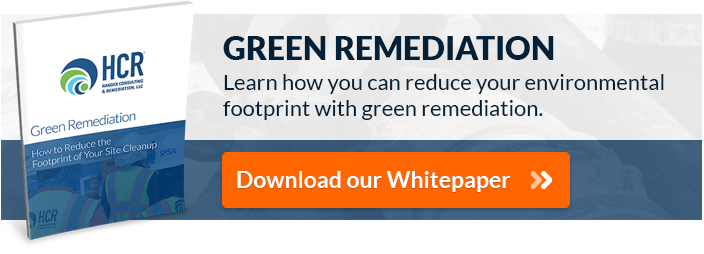
Our early safety metrics were mostly reactive rather than proactive. By this, I mean that we were correcting hazards after an incident had occurred. The problem with this system is that its effectiveness is limited in the prevention of all incidents. Truth is, we were so focused on preventing a recurrence that we lost sight of the main goal; Hazard Recognition and Abatement.
This limitation has created a shift toward what is called “leading indicators.” These are the proactive steps one takes in recognizing a hazard before an incident occurs and how they address it. But how exactly do we recognize and abate these hazards?
There are three primary ways we can do this:
1. Good Catch Reporting
Good catch reporting is a way to promote and maintain an incident-free workplace through the identification, observation, and reduction of hazardous behaviors and conditions. When a team member notices a possible hazard, he or she will report it and ensure that corrective action is taken to prevent future incidents. This is called a “good catch.”
This type of preventative action relies heavily on employee involvement and increased awareness. One of the main benefits, though, is that Good Catch Reporting encourages communication and awareness among team members. It also makes safety a priority for each individual team member and spreads accountability evenly across all employees.
Since we started the Good Catch program at Handex, we haven’t seen repeated incidents or reports. This is a big improvement over years past where we saw repeated near loss reports. By implementing Good Catch Reporting in our organization, we can now say that we are not just lucky, we are good. As Good Catch reporting increases, the likelihood of even a near loss occurring decreases significantly.
2. Quality Discussions
Another important way of proactively correcting hazards is to include quality discussions as part of your staff meetings. You need to be mindful of what your staff is taking away from these meetings. Is it quality? Is it productivity? Is it safety?
Each staff meeting should contain a brief discussion on safety standards and responsibilities. This helps to promote awareness and unity among your staff. Only when everyone is on the same page will your organization see improvement in its safety metrics.
3. Site Inspections
Routine worksite inspections are necessary for maintaining your organization’s health and safety standards. They should look at every aspect of the project, not just the slips, trips, and falls. This includes Permitting performance, PPE, and worksite equipment among others. Worksite inspections should focus on five main areas:
- Safety hazards
- Biological hazards
- Chemical hazards
- Ergonomic hazards (repetitive movements, temperatures, etc.)
- Physical hazards (noise, vibrations, etc.)
These safety inspections should not just focus on the work environment, but the practices as well. Ask yourself “Is there a better, safer way to perform this job?”
Be Proactive
At Handex, we lean more toward the proactive side of accident prevention, rather than the reactive side. Learning from past incidents is important in preventing reoccurrence. However, it’s more important to build on communication, recognition and abatement skills to ensure the success of our loss prevention program. We believe it is more effective to track our successes rather than our losses. This is the difference between looking backward and looking forward.



